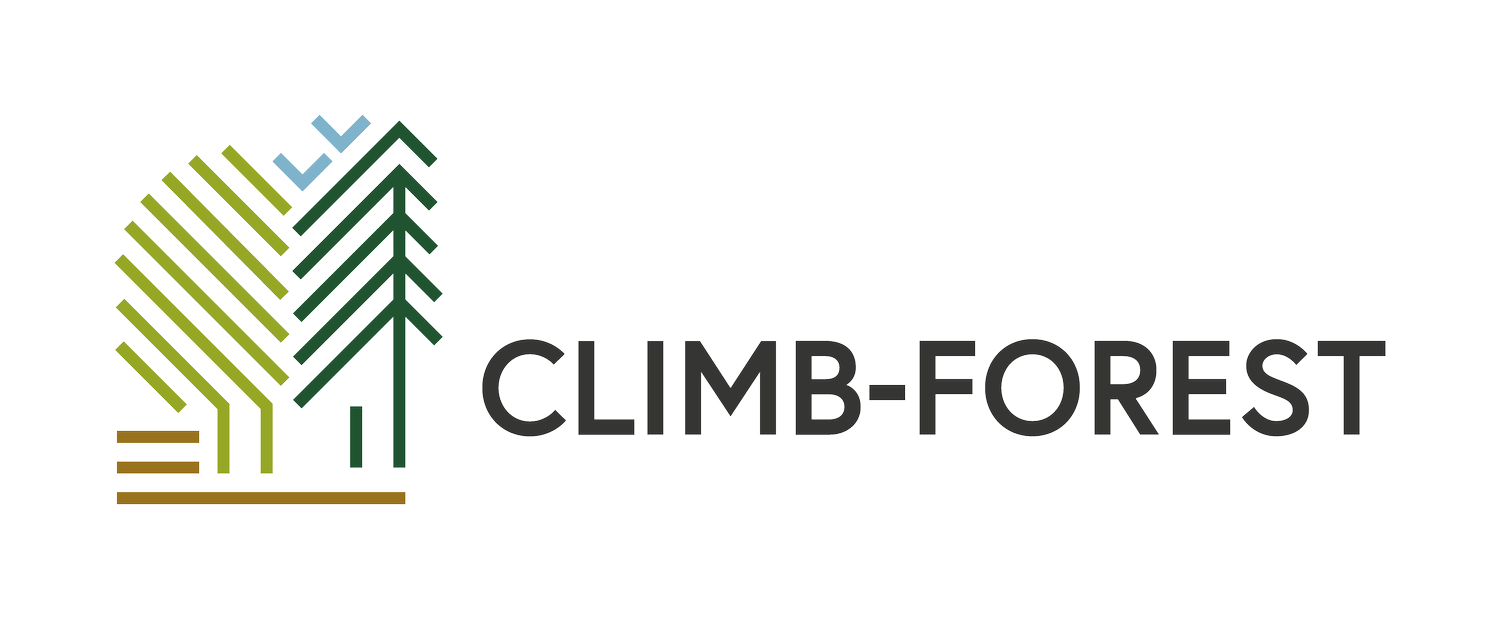
Deliverables
5.1 - Forest management toolbox
Forest management is about which tree species we shall use, which structure the forest shall have, how dense the forest shall be, how we manage habitat trees etc. This forest management toolbox is a list of options for Europe’s forests.
The toolbox will be used by the stakeholders during the field visits in work package 5 (WP5) of the Climb-Forest project. The stakeholders shall select forest management options that they recommend, or prefer, to be used from now on.
A forest management toolbox presents a set of standardized alternatives for forest management for forest practitioners to consider for their forest stand to increase resilience in view of the ongoing climate change, and the demands for wood production. At the same time, the proposed alternatives shall consider biodiversity and ecosystem services, and provide uptake of carbon dioxide for climate change mitigation.
The toolbox contains a structured set of forest management options, to ensure that all practitioners and researchers working in forestry and forest research follow the same structure and that we have sufficient information to model and evaluate how the forests will perform based on practitioners’ preferences. For example, in the Horizon-Europe CLIMB-FOREST project we shall evaluate how good the preferred management options are in providing the services of wood, to store carbon, to provide habitats for flora, fauna, and fungi, and also recreation for Europe’s population.
There is no perfect forest management. It is up to policy makers and forestry stakeholders to decide based on their preferences and knowledge. The forest management options are applicable to any geographic region in Europe, and can be placed along two important dimensions; 1. with a range from nature protection to wood production, and 2. going from today’s methods to methods that make the forests strong, or robust, or resilient towards climatic driven disturbance. The management options consider spatial scale, meaning different forest stands get treated with different set of options for management, and temporal scale, that serves to mitigate and cope with climate change for decades to come and alternating use of the biomass. There are a set of 13 parameters settings for the management choices; 1. Forestry objective, 2. Harvesting type, 3. Age management, 4. Tree species, 5. Within-species genetics, 6. Establishment and regeneration, 7. Density management, 8. Site management options, 9. Edge options, 10. Single-tree or tree-group options, 11. Climatic stress, 12. How to increase resilience of aged trees, and 13. Replicate your management options for nearby stands.
Your feedback.
Please get in touch if you have any comments or suggestions for this output
